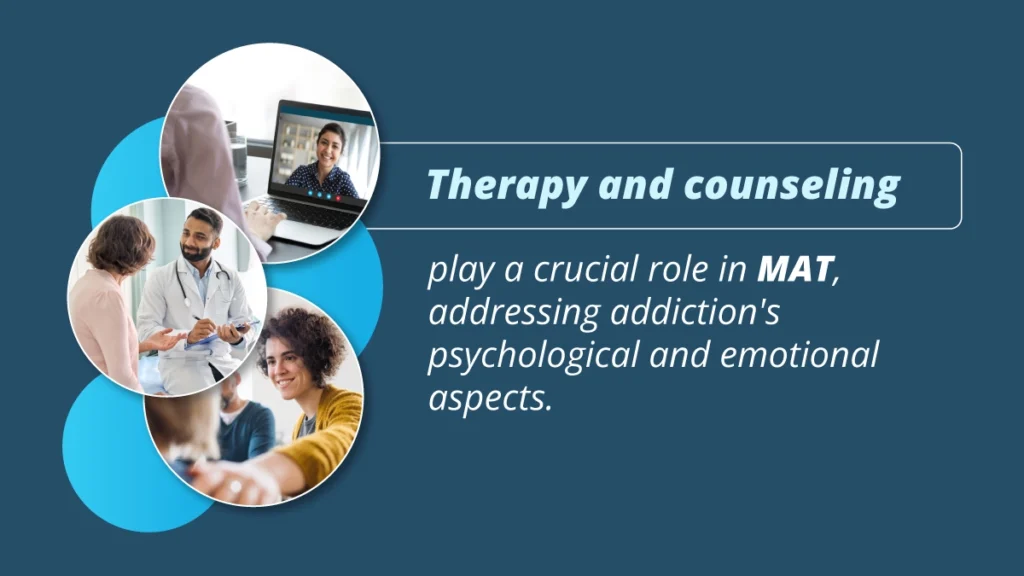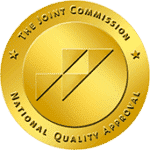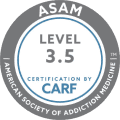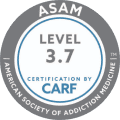Medication-assisted treatment (MAT) has emerged as an integral approach to addressing the devastating impact of opioid and alcohol addiction. By combining medication with counseling and behavioral therapies, MAT offers a comprehensive strategy to combat addiction’s physical and psychological aspects.

However, like any treatment option, it has its benefits and drawbacks. This article delves into medication-assisted treatment, exploring its potential advantages to individuals grappling with opioid and alcohol use disorder. It also considers the limitations and concerns associated with this approach.
If you want to overcome substance abuse or any other mental health problem, contact our rehab center, The Haven Detox-New England.
Key Takeaways
Medication-Assisted Treatment (MAT) combines FDA-approved medications with counseling and support services to treat opioid or alcohol addiction. Here is what you need to know:
- MAT helps suppress opioid cravings, alleviate withdrawal symptoms, and block the effects of opioids.
- Common medications used in MAT include methadone, buprenorphine, and naltrexone.
- MAT is effective in reducing illicit opioid use, preventing overdoses, and improving the overall quality of life.
- Therapy and counseling play a crucial role in MAT, addressing addiction’s psychological and emotional aspects.
Get effective MAT with a therapy approach from one of the best rehab centers in the USA, The Haven Detox-New England. Contact us now at (844) 933-4145.
The Opioid Crisis
The opioid crisis has devastated the USA, with widespread cases of opioid use disorder and opioid overdose. Overdose deaths have skyrocketed, prompting urgent action. The crisis has been associated with criminal behavior, as individuals desperate for opioids engage in illicit activities to obtain drugs.
Opioid receptors in the brain play a crucial role in addiction, reinforcing the cycle of use. Easy access to opioids has exacerbated the problem, with prescription painkillers as a gateway to illicit opioid use. Addressing this crisis requires comprehensive measures, including increased awareness, improved treatment options, and tighter regulation of opioid availability.
Benefits of MAT for Opioid Addiction
Medication-assisted treatment (MAT) offers several notable benefits for treating opioid addiction. It utilizes FDA-approved medications and comprehensive care to address the multifaceted nature of opioid use disorder (OUD).
Suppresses Opioid Cravings and Withdrawal Symptoms
MAT effectively suppresses opioid cravings and mitigates the debilitating symptoms of withdrawal. Opioid treatment programs administer medications such as methadone, buprenorphine, and naltrexone to provide relief and stabilize individuals undergoing treatment for opioid dependence.
By alleviating cravings and withdrawal symptoms, MAT enables patients to focus on their recovery journey and engage more effectively in therapy.
Blocks the Effects of Opioids
Certain MAT medications, like naltrexone, function as opioid receptor blockers. They bind to opioid receptors in the brain, preventing the euphoric effects of opioids and discouraging relapse. By blocking these effects, MAT aids in breaking the cycle of addiction and promoting sustained recovery.
Manages Co-Occurring Disorders
MAT adopts a whole-patient approach, recognizing that individuals with opioid addiction may also have co-occurring mental health disorders or chronic diseases. MAT addresses these complex needs by integrating medication with counseling and support services.
It helps manage co-occurring disorders, enhances mental well-being, and supports individuals in making positive lifestyle changes. MAT for the treatment of opioid addiction has demonstrated better outcomes compared to non-medication approaches.
Research has consistently shown that combining medications with counseling and behavioral therapies leads to higher rates of treatment retention, reduced illicit opioid use, decreased risk of overdose, and improved overall quality of life. Our rehab center offers a comprehensive and evidence-based solution to the chronic and complex nature of opioid addiction.
Medications for Opioid Addiction
Medication-Assisted Treatment (MAT) utilizes several medications approved by the FDA to address opioid addiction effectively. When combined with counseling and support, these medications provide a comprehensive approach to treating alcohol or other substance use disorders.
Methadone
Methadone is a medication commonly used in MAT for opioid addiction. Specialized healthcare providers dispense it and help to alleviate withdrawal symptoms and cravings associated with opioid use. Methadone is a long-acting opioid agonist, gradually tapering the dose over time to aid individuals in transitioning to a drug-free state or a less intensive form of treatment.
Buprenorphine
Buprenorphine is another FDA-approved medication used in the treatment of opioid addiction. It can be prescribed by qualified healthcare providers, including physicians, in various settings. Buprenorphine is a partial opioid agonist that reduces withdrawal symptoms and cravings.
It comes in different forms, such as sublingual tablets, sublingual films, and implants, providing flexibility in treatment options.
Naltrexone
Naltrexone is an opioid antagonist used in MAT for opioid addiction. It blocks the effects of opioids by binding to opioid receptors in the brain, thus reducing cravings and preventing relapse. Naltrexone is available in both oral and extended-release injectable forms.
Unlike methadone and buprenorphine, naltrexone does not cause physical dependence, making it a suitable option for individuals who have completed detoxification.
Naloxone
While not a primary medication for long-term maintenance, naloxone is critical in preventing opioid overdose deaths. Naloxone is an opioid antagonist that rapidly reverses the effects of opioids in case of an overdose.
It is commonly administered via nasal spray or injection. Naloxone is often provided to individuals with opioid use disorder and their loved ones to have on hand in emergencies.
Medication-assisted treatment combines these medications with counseling and support services to provide a holistic approach to treating substance use disorders, including opioid addiction.
Role of Therapy in MAT
Therapy is vital in Medication-Assisted Treatment (MAT) for opioid addiction. Through counseling and behavioral therapy, individuals receive the necessary support to address their addiction’s psychological and emotional aspects.
Group therapy helps individuals understand the underlying causes of their substance use disorder, develop coping skills, and make positive lifestyle changes.
Cognitive behavioral therapy offers psychosocial support and is best for treating OUD. It also provides a safe space to explore and address co-occurring mental health disorders, contributing to holistic recovery.
By combining therapy with medication, MAT offers a comprehensive approach that promotes long-term success, equipping individuals with the tools and strategies to sustain their recovery and improve their overall well-being.
Frequently Asked Questions (FAQ)
What is the most common form of medical treatment for opioid addiction?
The most common form of medical treatment for opioid addiction is Medication-Assisted Treatment (MAT). MAT combines FDA-approved medications, such as methadone, buprenorphine, and naltrexone, with counseling and support services. These medications help to alleviate withdrawal symptoms, reduce cravings, and block the effects of opioids.
By addressing the physical aspects of addiction, MAT provides individuals with a foundation for recovery. It is widely recognized and utilized as an effective treatment approach for opioid addiction in the medical community.
What are three medications that can be used to treat opioid use disorder?
Three commonly used medications for treating opioid use disorder are methadone, buprenorphine, and naltrexone. Methadone and buprenorphine are opioid agonists that help alleviate withdrawal symptoms and cravings.
Naltrexone, on the other hand, is an opioid antagonist that blocks the effects of opioids and reduces cravings. In combination with counseling and support, these medications form the foundation of Medication-Assisted Treatment (MAT) for opioid addiction.
What is a medication-based treatment for opioid use disorder?
A medication-based treatment for opioid use disorder involves using FDA-approved medications in combination with counseling and support services. This approach, known as Medication-Assisted Treatment (MAT), helps individuals manage withdrawal symptoms, reduce cravings, and prevent relapse.
Medications such as methadone, buprenorphine, and naltrexone are commonly used to address opioid use disorder. They are integrated into a comprehensive treatment plan to support individuals on their path to recovery.
Redefine Your Future at The Haven Detox-New England
In the fight against opioid use disorder (OUD), you are not alone. Today can be the first day of your new life, free from addiction. Your courage is the key to this new chapter, and MAT can be your guide on this journey.
The Haven Detox-New England is ready to walk this path with you. Our comprehensive approach awaits you. The detoxification program cleanses your body and residential treatment for focused care. We offer evidence-based therapies that address the root cause of addiction and a dual diagnosis approach to treat co-occurring mental disorders.Don’t wait any longer. Reach out to The Haven Detox-New England today. Embrace the opportunity for a healthier, addiction-free life. Contact us now at (844) 933-4145.



